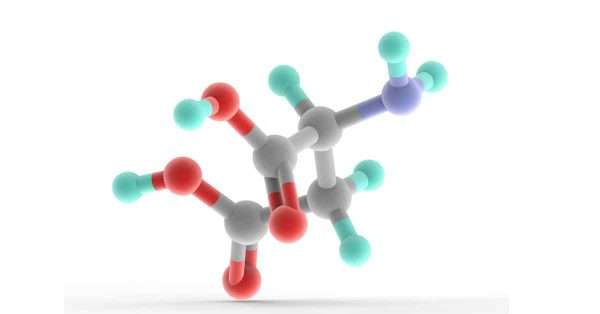Discover ALA for pain relief
Alpha Lipoic Acid (ALA), a naturally occurring compound, has been recognized for its potential in pain management. This article, based on high-quality research from reputable sources delves into the workings of ALA. By the end, you’ll gain an understanding how to utilize ALA for pain relief for different types of pain.
Understanding Alpha Lipoic Acid (ALA)
Alpha Lipoic Acid (ALA) is a naturally occurring compound that’s found in every cell of the human body. Its primary function is to convert glucose, the body’s main energy source, into usable energy for our cells. This process is crucial for our body’s essential functions and overall health.ALA is a potent antioxidant. Antioxidants prevent or slow damage to cells caused by free radicals. Free radicals are unstable molecules that are created within the body as a reaction to environmental and other pressures. By neutralizing these harmful molecules, ALA helps reduce oxidative stress and inflammation, which are key factors in developing chronic diseases like diabetes and its complications, including neuropathic pain.
ALA and Its Role in Pain Management

ALA’s potential in pain management is increasingly recognized, particularly for neuropathic pain. Neuropathic pain (Neuropathy) is a type of chronic pain that’s caused by damage to the nerves, often as a result of conditions like diabetes or chemotherapy. This type of pain is often chronic and can be severe. Here are some of the areas where ALA has shown promise:
Nerve Pain
- Nerve Pain: Nerve pain(Neuropathy), also known as neuropathic pain, is caused by damaged nerves. This type of pain is often chronic and can be severe. ALA has been found beneficial in treating nerve pain, particularly in cases of diabetic neuropathy56.
- Diabetic Neuropathy: a type of nerve damage that can occur if you have diabetes. High blood sugar injures nerves throughout your body. Still, diabetic neuropathy most often damages nerves in your legs and feet. Studies have found that ALA could benefit symptoms and signs of Diabetic Sensorimotor Polyneuropathy (DSPN) without significant side effects1. It has also provided substantial relief from diabetic neuropathy2.
- Chemotherapy-Induced Neuropathy: Chemotherapy drugs, while effective in treating cancer, can cause side effects, including neuropathy. Neuropathy is a chronic nerve problem that causes numbness, pain, tingling, swelling, or muscle weakness in different body parts. It generally begins in the hands or feet and gets worse over time. ALA could potentially mitigate neuropathy caused by chemotherapy drugs4.
Back Pain
- Back Pain: Back pain is the most frequent reasons people seek out a doctor or miss work, and it is a leading cause of disability worldwide. ALA can be beneficial in the treatment of back pain. It has shown significant improvements in paresthesia, stabbing, and burning pain78.
Other Types of Pain
- Burning Mouth Syndrome (BMS): Burning Mouth Syndrome (BMS) causes burning sensations in the mouth that can occur daily for months or longer. A dry mouth and a bitter or metallic taste often accompany it. Studies have found that drug therapy with ALA may provide relief of oral burning or pain symptoms in BMS3.
- Arthritis & Muscular Pain: While there is limited research specifically on ALA for muscle pain and arthritis, its anti-inflammatory and antioxidant properties may contribute to pain relief
Additional Benefits of ALA

In addition to its potential in pain management, ALA has several other health benefits:
- Blood Sugar Control: ALA may aid in controlling glucose by speeding up blood sugar metabolism. This could help manage diabetes, a disease characterized by high blood glucose levels1.
- Antioxidant Properties: ALA is a type of antioxidant found in plant foods and helps scavenge free radicals, slows the aging process, and helps treat diabetes naturally. It’s present in every cell in the body and helps turn glucose into fuel for energy2.
- Weight Loss: Supplementing with ALA is becoming increasingly popular; some believe it may help with weight loss3. It’s thought that ALA could help reduce body weight by enhancing fat burning and increasing the rate of metabolism.
- Skin Health: Some studies suggest that ALA could contribute to skin health, although more research is needed in this area3. It’s thought that ALA could help protect the skin from damage caused by factors such as sun exposure and aging.
Top-Rated Alpha Lipoic Acid Products
Here are some of the top-rated Alpha Lipoic Acid products based on quality, customer reviews, and value for money:
- Nutricost Alpha Lipoic Acid: This high-quality ALA supplement provides the 600 mg standard most people want. Each bottle is third-party tested to ensure quality. You also get 240 capsules for a very reasonable asking price, meaning you’ll be able to take these daily supplements for almost a year before making another purchase.
- Nature’s Bounty Alpha Lipoic Acid: Nature’s Bounty ALA supplement is another excellent choice due to its affordability and low concentration of ALA. A great choice if you don’t need the 600mg most brands include but still want to reap the benefits of this powerful antioxidant.
- Pure Encapsulations Alpha Lipoic Acid: Pure Encapsulations ALA is another great option for those seeking the lowest concentrations of ALA, ideal for the carnivores reading this. It really shines in purity, containing only hypoallergenic ingredients and ruthlessly third-party lab tested.
- Superior Labs Alpha Lipoic Acid: This 100% pure alpha-lipoic acid comes in a bottle of 120. It’s also NSF certified, one of the supplement industry’s highest-quality manufacturing assurance organizations.
- NOW Supplements Alpha Lipoic Acid: Most ALA supplements don’t include extra ingredients. This product is made with grape seed extract and Bioperine, which enhance the antioxidant power and provide ancillary benefits.
Conclusion
While more research is needed, current evidence suggests that ALA could be a promising treatment for various types of pain. It’s antioxidant and anti-inflammatory properties may also contribute to its potential benefits in other areas, such as blood sugar control, weight loss, and skin health. Consulting with a healthcare provider before starting any new treatment is essential.
More Stories
find more excellent stories on the blog!
References:
- Ziegler, D., Ametov, A., Barinov, A., Dyck, P. J., Gurieva, I., Low, P. A., Munzel, U., Yakhno, N., Raz, I., Novosadova, M., Maus, J., & Samigullin, R. (2006). Oral treatment with alpha-lipoic acid improves symptomatic diabetic polyneuropathy. Diabetes Care, 29(11), 2365-2370.
- Mijnhout, G. S., Kollen, B. J., Alkhalaf, A., Kleefstra, N., & Bilo, H. J. (2012). Alpha lipoic Acid for symptomatic peripheral neuropathy in patients with diabetes: a meta-analysis of randomized controlled trials. International Journal of Endocrinology, 2012, 456279.
- Femiano, F., & Scully, C. (2002). Burning mouth syndrome (BMS): double blind controlled study of alpha-lipoic acid (thioctic acid) therapy. Journal of Oral Pathology & Medicine, 31(5), 267-269.
- Gedlicka, C., Kornek, G. V., Schmid, K., & Scheithauer, W. (2003). Amelioration of docetaxel/cisplatin induced polyneuropathy by α-lipoic acid. Annals of Oncology, 14(2), 339-340.
- Ziegler, D., Low, P. A., Litchy, W. J., Boulton, A. J., Vinik, A. I., Freeman, R., Samigullin, R., Tritschler, H., Munzel, U., Maus, J., Schütte, K., & Dyck, P. J. (2011). Efficacy and safety of antioxidant treatment with α-lipoic acid over 4 years in diabetic polyneuropathy: the NATHAN 1 trial. Diabetes Care, 34(9), 2054-2060.
- Ziegler, D., Hanefeld, M., Ruhnau, K. J., Meissner, H. P., Lobisch, M., Schütte, K., & Gries, F. A. (1995). Treatment of symptomatic diabetic polyneuropathy with the antioxidant alpha-lipoic acid: a 7-month multicenter randomized controlled trial (ALADIN III Study). ALADIN III Study Group. Alpha-Lipoic Acid in Diabetic Neuropathy. Diabetes Care, 18(10), 1379-1383.
- Ranieri, M., Sciuscio, M., Cortese, A. M., Santamato, A., Di Teo, L., Ianieri, G., Bellomo, R. G., Stasi, M., & Megna, M. (2009). Theuse of alpha-lipoic acid (ALA), gamma linolenic acid (GLA) and rehabilitation in the treatment of back pain: effect on health-related quality of life. International Journal of Immunopathology and Pharmacology, 22(3_suppl), 45-50.
- Memeo, A., & Loiero, M. (2008). Thioctic acid and acetyl-L-carnitine in the treatment of sciatic pain caused by a herniated disc: a randomized, double-blind, comparative study. Clinical Drug Investigation, 28(8), 495-500.




